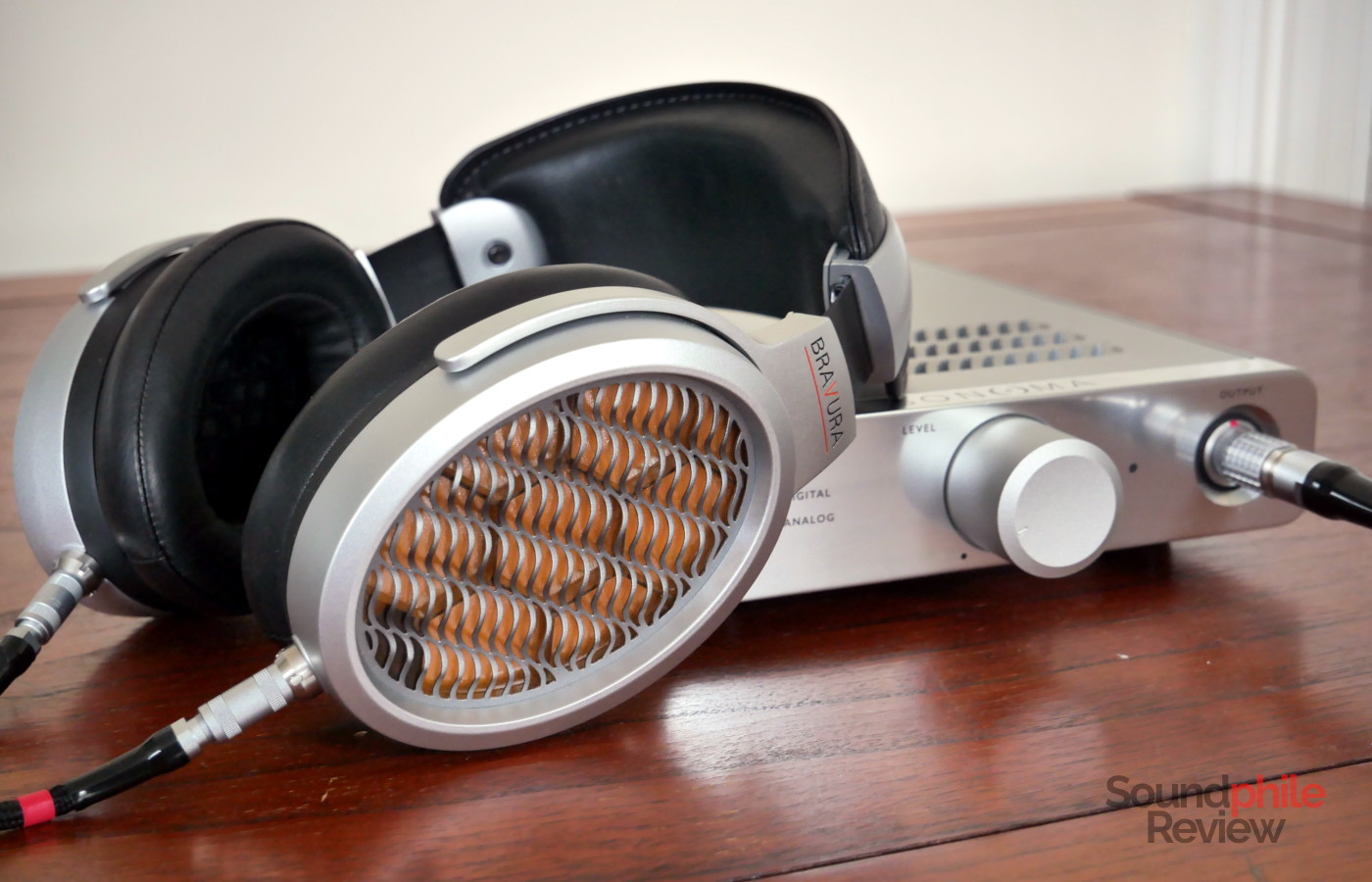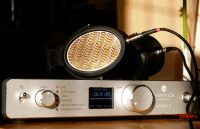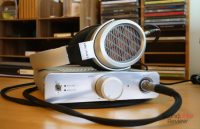Almost five years have already passed since I reviewed the Warwick Acoustics Sonoma M1, their first electrostatic headphones system. Back then I was blown away by the detail and the refinement of their sound. The new Warwick Acoustics Bravura are an evolution of that model which aims at providing an even better experience. “Bravura” is Italian for “being good [at something]” – in this case at reproducing music. Let’s see how these headphones fare at that!
One thing to note is that the energiser-amplifier is the same as that of the older model and the only difference between the two systems lies in the headphones themselves. However, since you can only use the Bravura with the Sonoma energiser, I will include a section on it anyway.
Disclaimer: I received this unit on loan from Warwick Acoustics for the purpose of this review (thanks, Martin!). The headphones retail for £2,095 / $2,395 and the energiser will set you back an additional £4,300 / $4,600; the black version costs £2,395 /$2,795 for the headphones and £4,600 / $5,000 for the energiser. Additional information on their website.
Packaging & Accessories
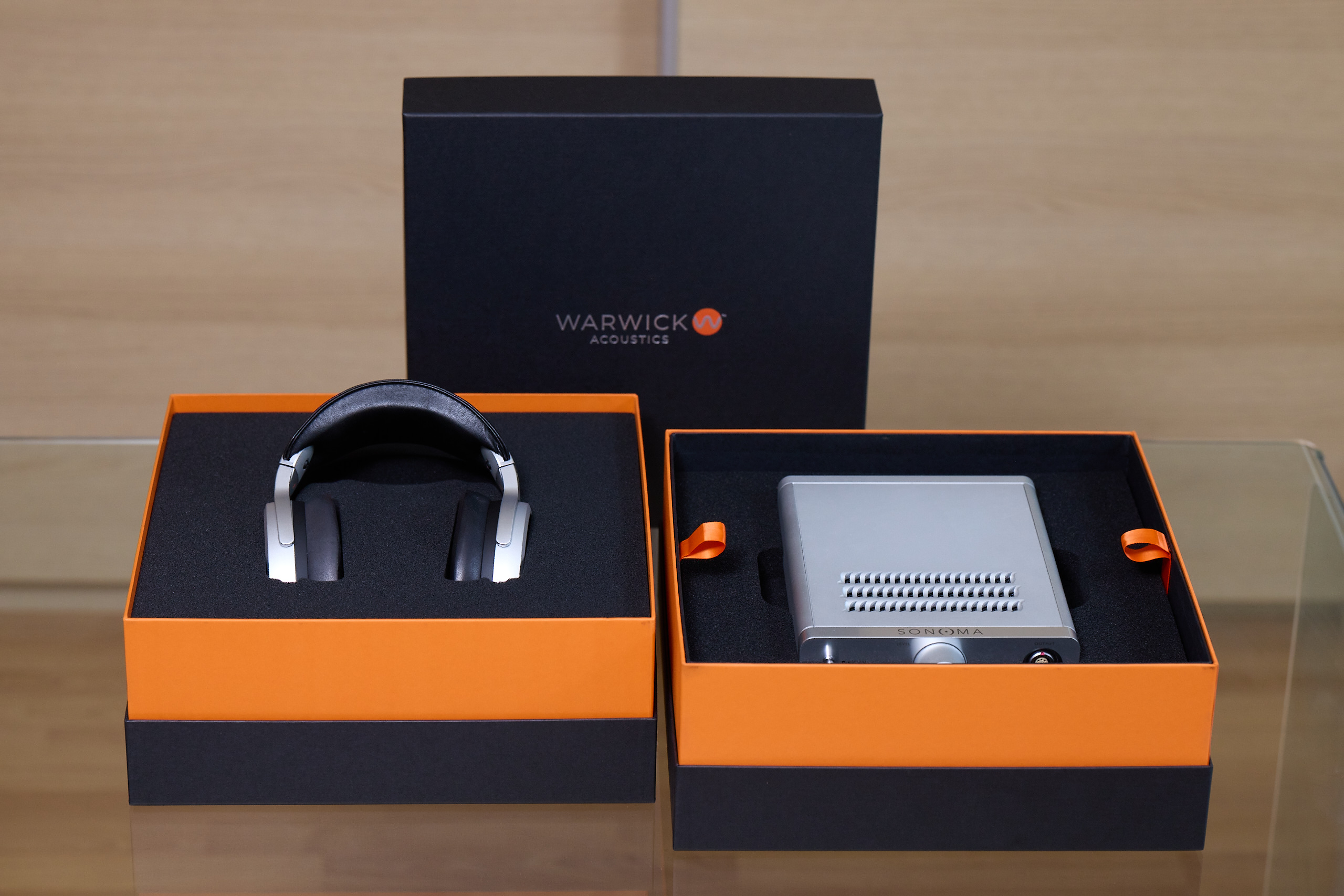
I took the Bravura system home from CanJam in London in a large Pelican case, but the retail version comes in two separate boxes – one for the headphones, one for the amplifier. The packaging for the headphones includes the removable cable, while that for the energiser includes the power supply and a USB-A to USB-B cable.
Design & Comfort
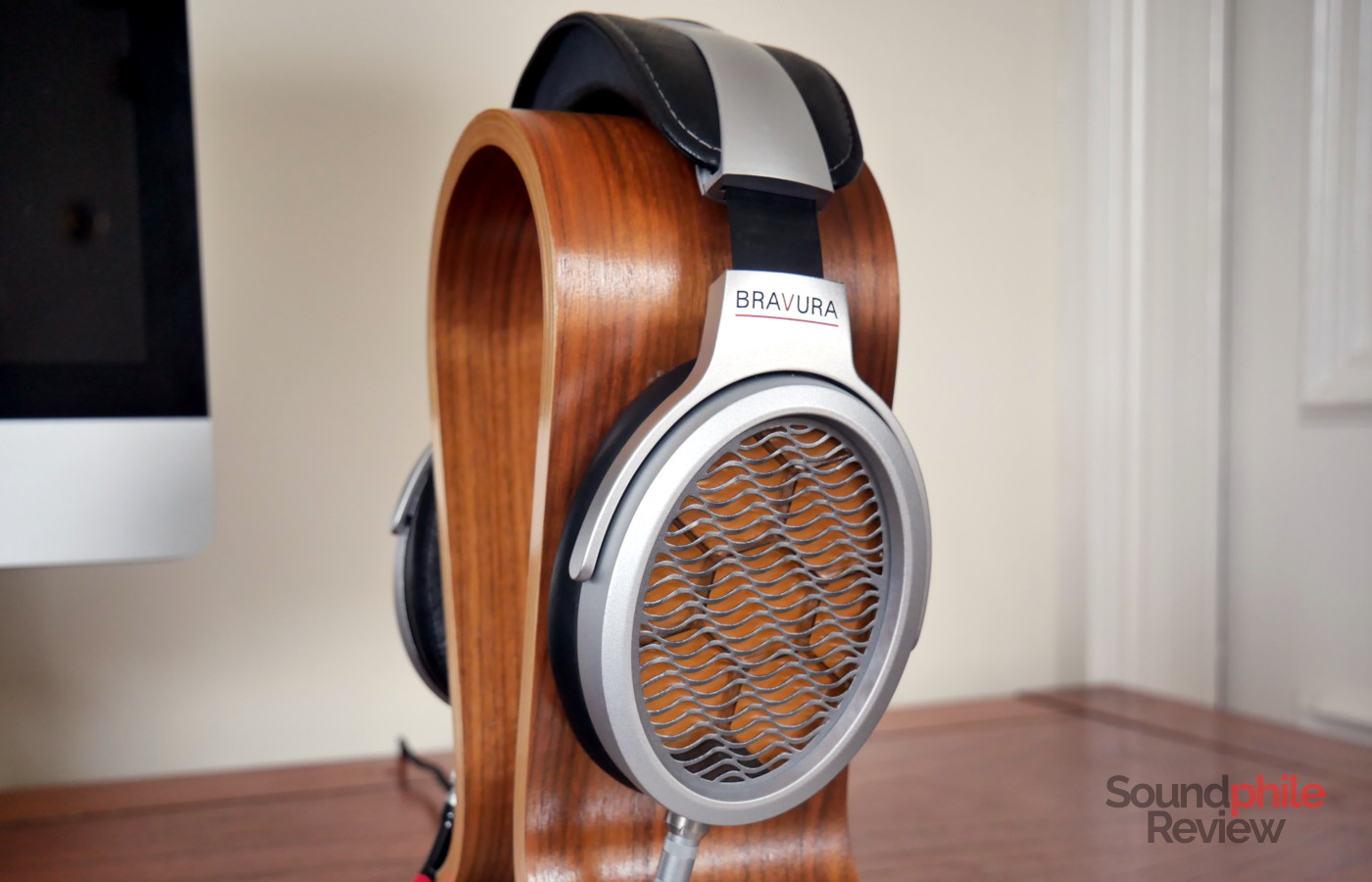
The Warwick Acoustics Bravura are quite striking in their design. They feature three colours: silver, black and orange for the grilles. There is also an all-black edition which still features orange in the grilles. The earcups and the gimbals are made of a magnesium alloy, whereas the headband is made of plastic with a metal (presumably steel) core. The headphones are certainly very modern and clean, and they’re relatively big, too. Despite looking quite imposing, and therefore giving the impression of being heavy, they are actually relatively lightweight.
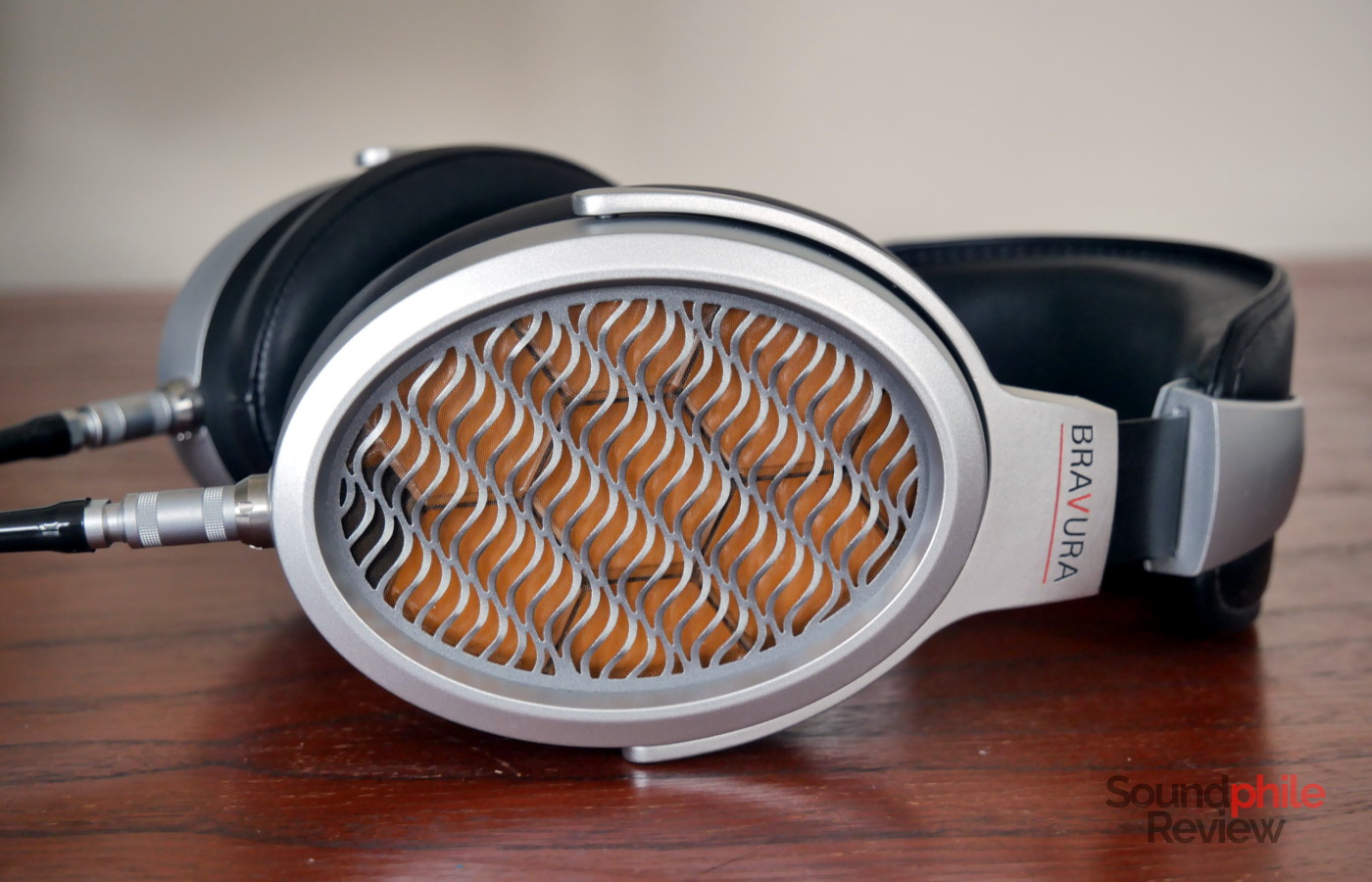
The grille covering the drivers is made of metal and has a wave-like pattern which happens in all three dimensions, as it also has wave-like bumps. It is the same designed on the Sonoma M1 and the Aperio, as well as the Sonoma M1 energiser.
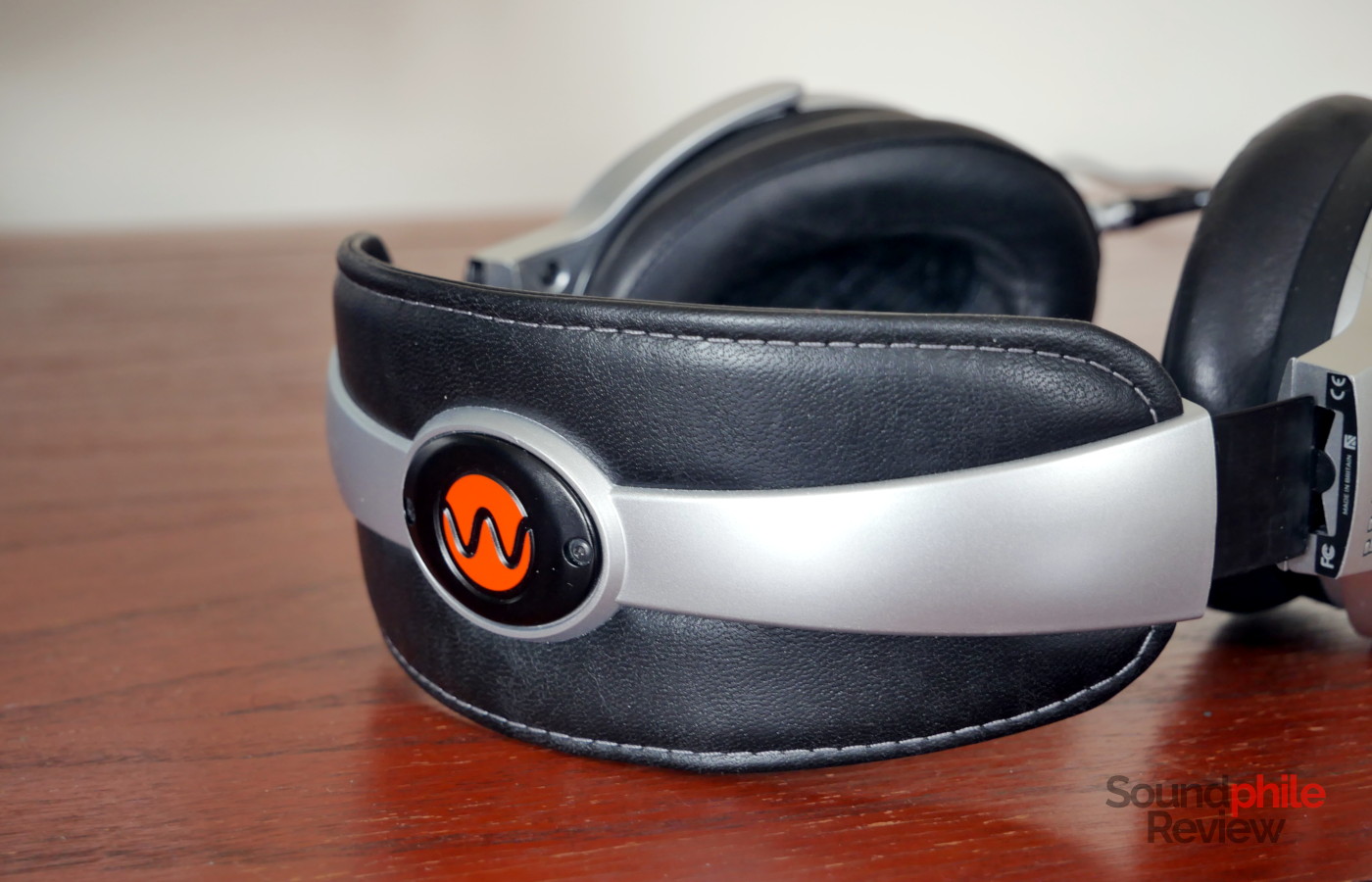
The headband has the same design as that of the Aperio, Warwick Acoustics’ flagship. It is made of a rigid (but still flexible) metal band which runs on top of the leather-covered padding. The padding in the headband is very generous and very soft: these two qualities combine to make the Bravura very comfortable to wear, even for someone like me who has a very sensitive scalp. The leather is incredibly soft and smooth – it is, in fact, the softest and smoothest I’ve seen to date.
Build quality is outstanding and the Warwick Acoustics Bravura look and feel like a luxury product (which, in fact, they are!). The materials all feel high-end and the assembly is flawless. Even the rubbery strain relief on the cable looks premium!
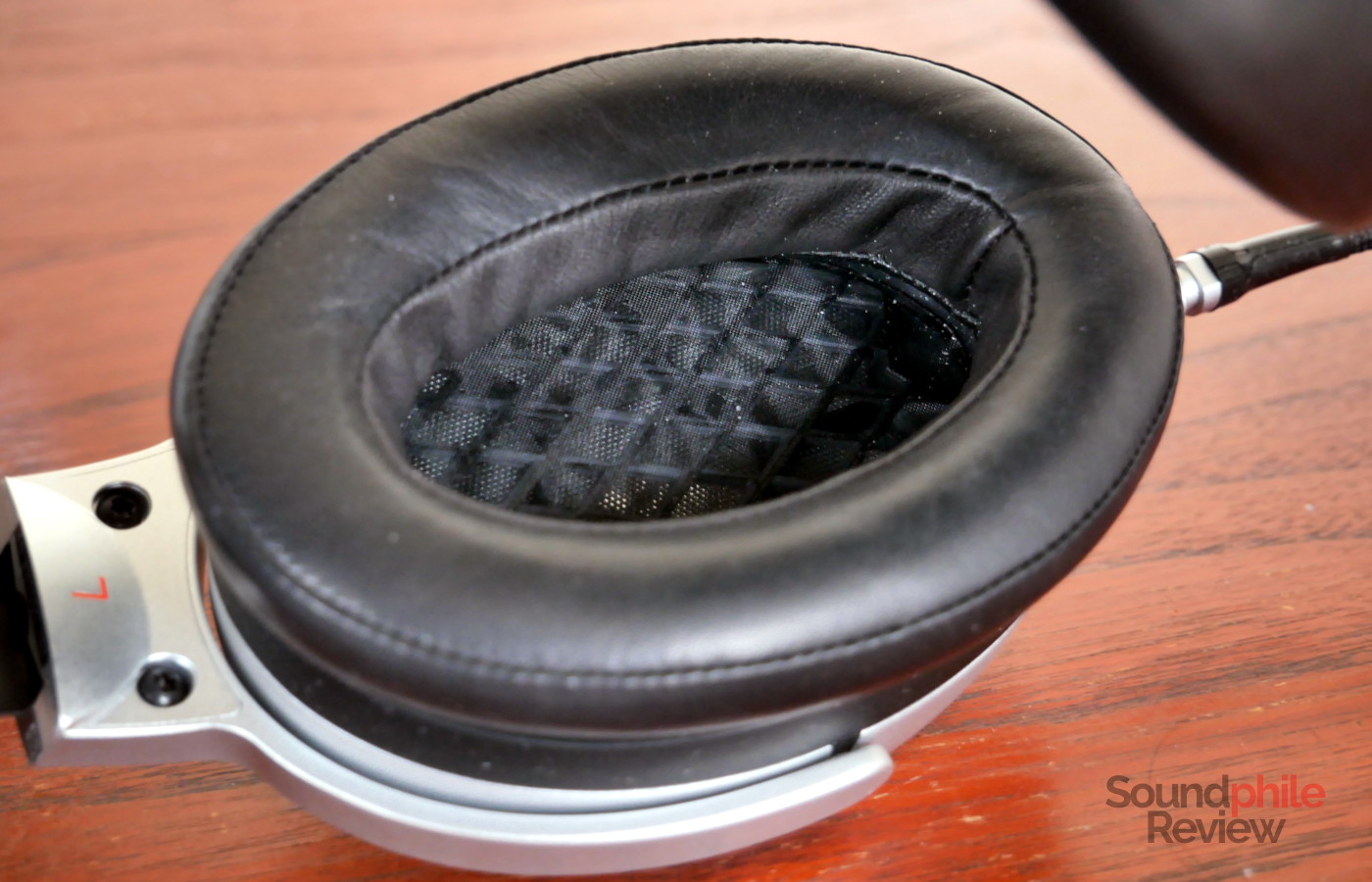
Despite being open-back, the Bravura offer a modicum of passive isolation. In fact, there is a very weird sensation when putting them on, as it feels like there’s sudden complete silence. It then goes back to almost normal; I think that this is due to the fact that the high-frequency component of noise from around you is greatly reduced. On the other hand, there’s not a lot of leakage: you have to really raise the volume to impossible levels to hear anything at ~50 cm. You have to raise the volume all the way up!
The cable is solid and well-made, with a fabric sheath that covers it. Inside it are actually two distinct cables which are paired between the energiser and the Y-split of simplicity and convenience. This makes it quite difficult to bend it sideways and this, coupled with a general rigidity, makes it less convenient than it could when using the Bravura at a desk. It is less of an issue when using the system from a sofa – something you can do as the cable is 2 m in length.
Sonoma M1 Energiser Features & Specs
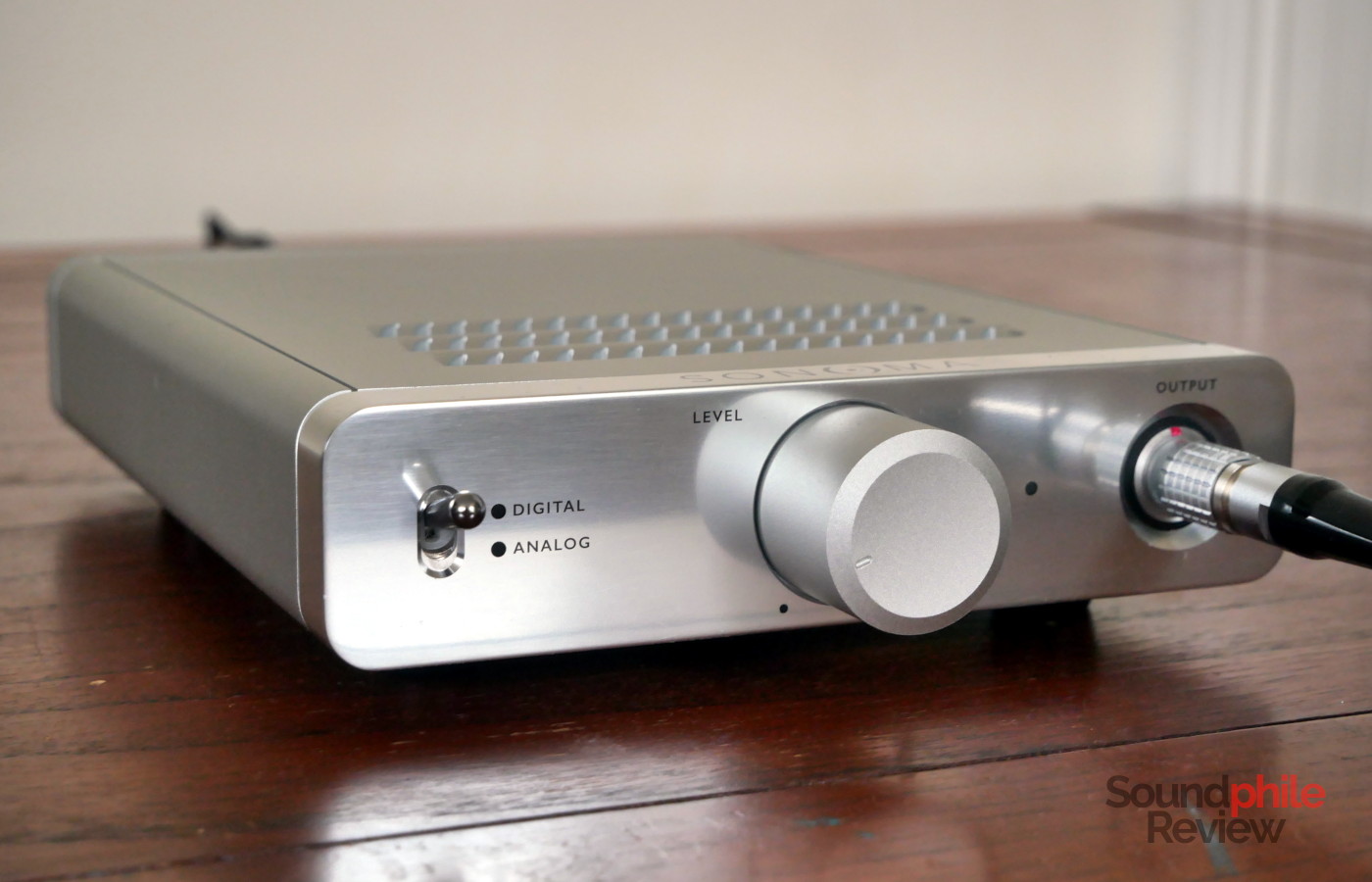
The Bravura comes with the same energiser unit as the Sonoma M1 system. It is an all-in-one device which also acts as a DAC and amplifier. This means you can connect it directly to a computer or other device and you don’t need a separate DAC; it works as a self-contained system. The analogue input, however, allows you to use an external DAC if you want to.
At 190 x 290 x 57 mm in size and 2.45 kg of weight, the energiser unit is quite large; the only reason why it is not stackable with most other audio devices I own is because it is deeper than they. The chassis is made of machined aluminium, with a set of holes on top that uses an identical design to the grille on the headphones.
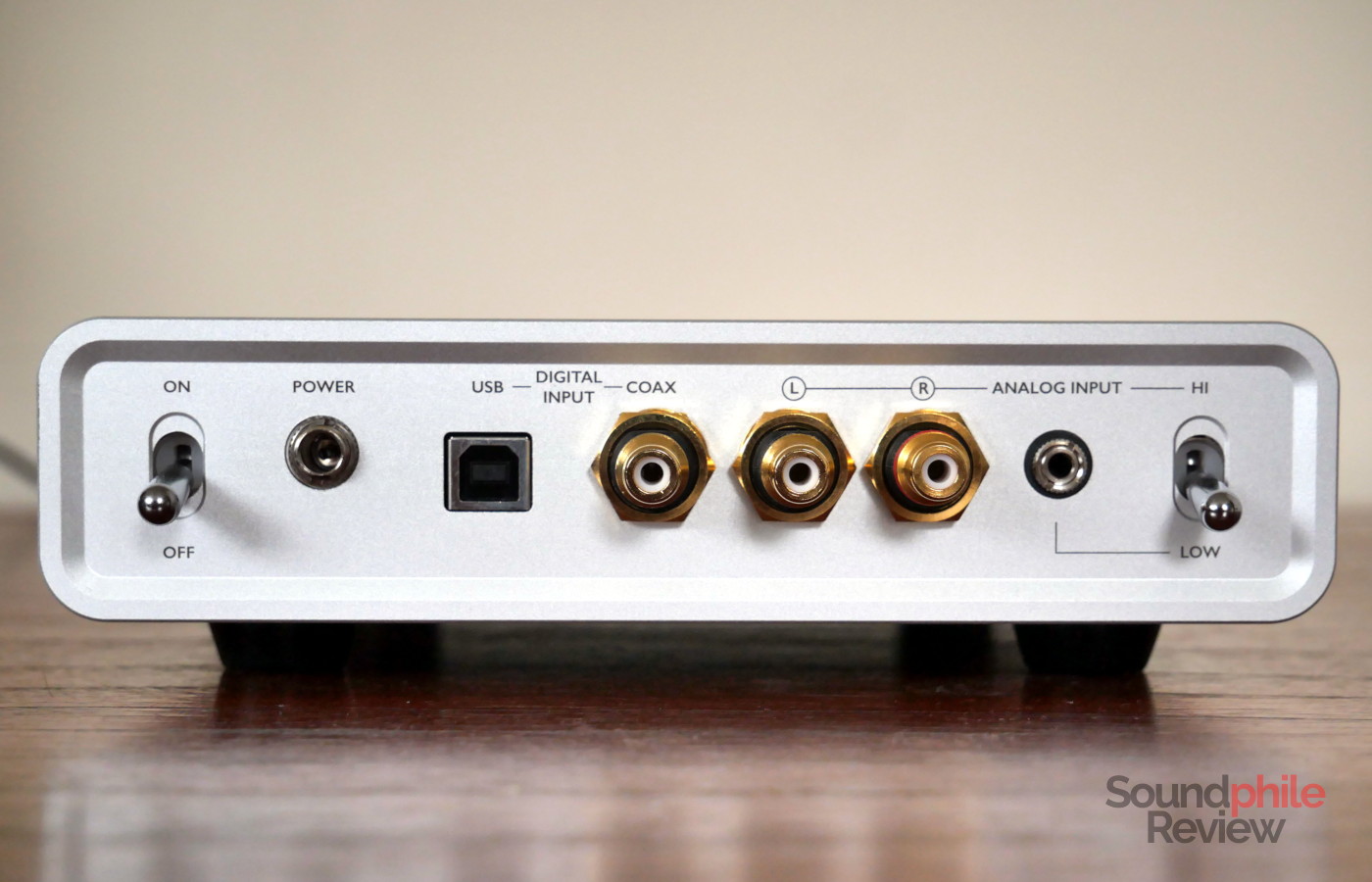
On the front of the energiser we find the digital/analogue switch, the volume knob and the headphone output connector. On the back we find the power switch (which I think would have worked better on the front, in place of the digital/analogue switch), the power connector (which comes with a screw-in ring to prevent accidental disconnections), a USB-B port, a coaxial connector, stereo RCA input, 3.5 mm jack input and a switch to select between the latter two. There is unfortunately no optical input, which would come in rather handy. Overall, though, it is a very complete set of input options.
The knob is actually more of a selector between fixed volume levels: it offers physical and audible “clicks” when turning it. This means that you can’t set any volume and that fine adjustment is impossible; I found that with the Bravura I would find one level too low and the one above too high, so a continuous adjustment would have worked better.
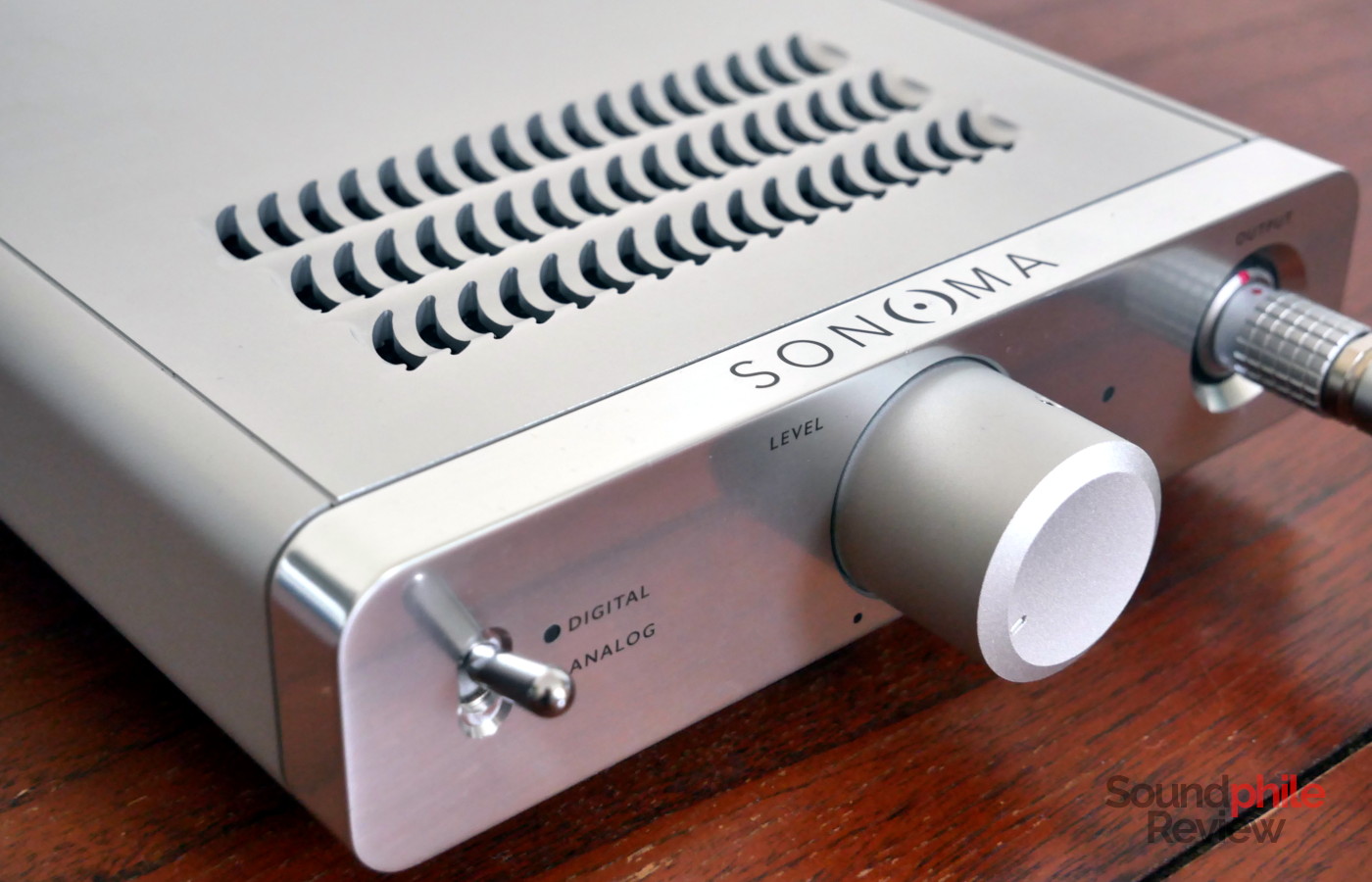
The amplifier gets barely warm, despite working in Class A; bear in mind I am writing this in one of the coolest summers of the last 50 years in Scotland, so you might find that it does in fact become rather warm if you live in hotter climates.
The Sonoma M1 energiser works with Windows, macOS and even with Linux in a plug-and-play fashion (though you might need drivers on Windows).
Warwick Acoustics Sonoma M1 DAC & Amp |
| Input | USB (up to 32 bit / 384 kHz PCM and up to DSD128 via DoP) Coaxial (up to 24 bit / 192 kHz) RCA 3.5 mm jack |
| Bias voltage | 1,350 V |
| Frequency response | N/A |
| THD+N (@1 kHz) | < 0.05% |
| SNR | 129 |
In terms of pure technical information on the energiser, there is not much available; the specs only report that it uses two ESS Sabre DACs (the model is unknown) in balanced configuration achieving an SNR of 129 dB. The analogue input is converted to digital using two AKM ADC chips and then fed to the DACs.
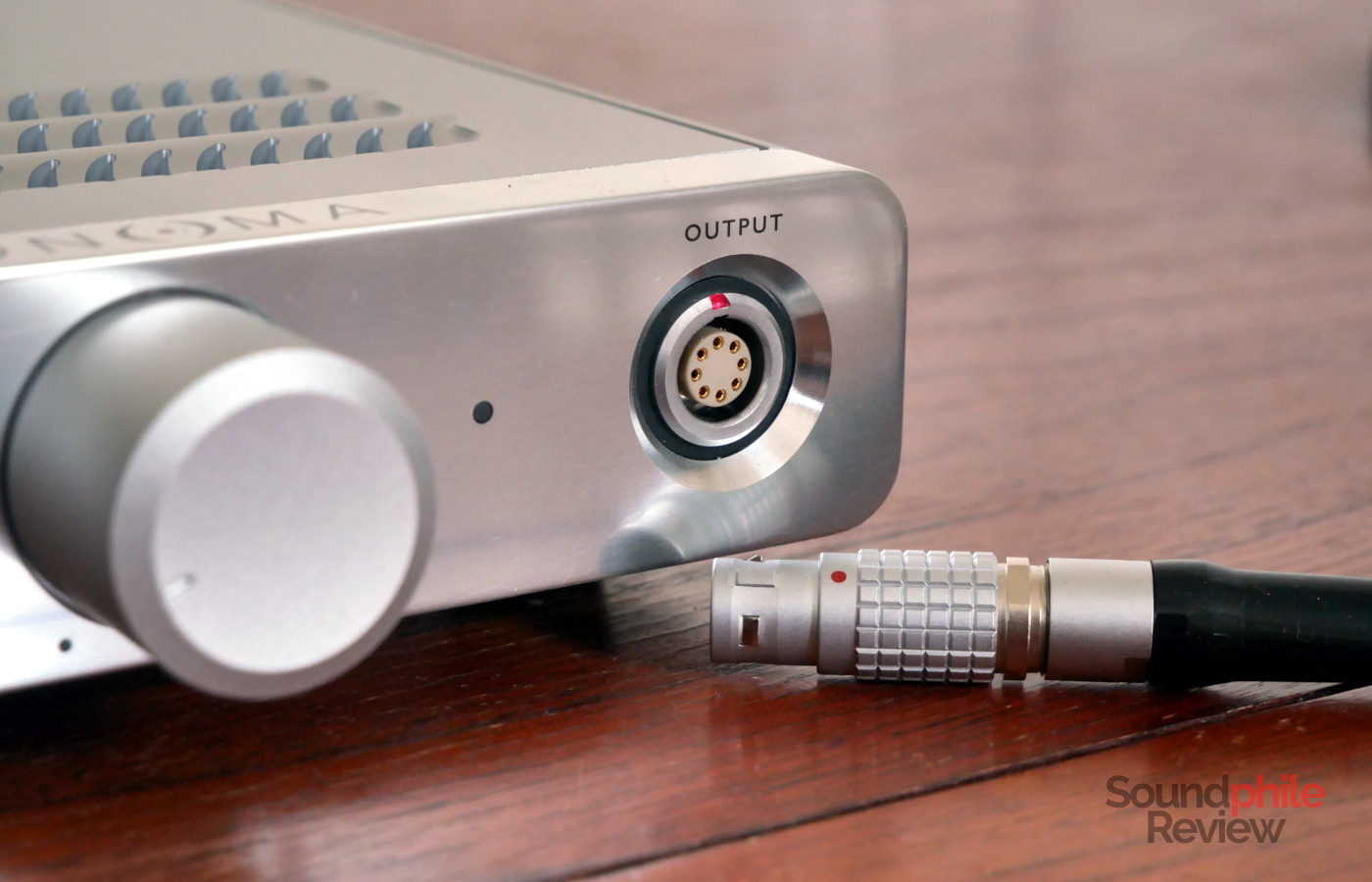
A significant piece of information is that it charges the grilles on the headphones at 1,350 V. This seems to be a side effect of using single-sided grilles rather than a more standard two-sided design, as the voltage had to be raised to compensate for the reduced intensity of the electric (and therefore magnetic) field caused by using a single grille. This custom specifications also mean that you won’t be able to use the energiser outside of Warwick Acoustics’ own line-up of products; at the moment this includes only two headphones. That’s a bit of “vendor lock-in” which you have to be aware of.
Sound & Headphones Specs
I tested the Warwick Acoustics Bravura connecting it to my computers – a 2011 iMac and a desktop PC.
Warwick Acoustics Bravura |
| Frequency response | 10 – 60,000 Hz |
| Impedance | N/A |
| Sensitivity | N/A |
While there is just one single membrane reproducing sound, it is divided in sections by the plastic frame that holds it. The frame de facto divides the single membrane into smaller membranes which then have specific acoustic characteristics. While it is a single diaphragm that behaves like one, at the same time we could say that it is a bit like having multiple drivers, as the different area and shape of each section gives it different acoustic properties.
Soundstage is wide, but it doesn’t have a lot of depth and produces the impression of being in a large room, with the instruments close to the listener and the sound reverberating in the space. Imaging is simply spectacular, with pinpoint-like placement of the various instruments in space. It is helped in this by the fact that instrument separation is impressive: no matter how complex and congested a track is, the Bravura always offer superb clarity that allows you to distinguish between the various instruments easily.
There’s a common myth that electrostatic and planar headphones aren’t good at bass. Which is funny, because planar especially are renowned for having flat, very deep bass! It is generally a bit more true about electrostatics, although headphones released in the past several years have done a lot to change this narrative. The Bravura are especially notable in this regard as they offer deep, rumbling bass that has nothing to envy from traditional planar headphones. In fact, you can listen to tracks such as The Prodigy’s Smack My Bitch Up or Breathe and forget you are using electrostatics, as bass hits hard and has very good depth. While it doesn’t reach the lowest notes with the same (impressive) speed and strength, it still offers very good presence in the sub-bass area. This is true even at lower volume levels, which is all the more impressive. Overall, bass lies right on the line of what I would call “neutral”, never sounding either excessive nor too shy. It is also super-fast, delivering that physical “kick” that so many people look for. There is a superb level of detail, like you would expect in an electrostatic headphone.
The mids offer a similar level of sophistication as bass. As is known, electrostatic headphones are great at delivering fast, realistic transients and that applies to the Bravura, too. You can clearly hear this in tracks such as Rodrigo y Gabriela’s Diablo Rojo, where the hits on the guitar bodies (as well as the rapidly plucked strings) sound fantastically fast and involving. In terms of tuning, midrange is not quite linear and neutral, but it gets close enough. It tracks the the neutral response up until ~700 Hz, when there are two bumps followed by a slight recession that continues up until treble. This can make mids sound warm and in general and, at times, slightly hollow. This is especially true with instruments like trumpets and violins, which take a bit of a hit from the de-emphasis in the upper range. The overall effect of this, however, is a bit counter-intuitive: mids sound very front and centre, almost in your face. Details are abundant and always very clearly presented, and therefore easy to hear; there is also a lot of micro-details.
Treble is a bit more interesting, as there are quite a few ups and downs: starting from the 5 kHz area, where there is a small dip which quickly recovers, only to give way to a major dip between 6 and 7 kHz. There’s ad additional dip after that, followed by a peak in the 11 kHz region. I might be especially sensitive to this area, but I can clearly hear this peak, as an example in a track like Snarky Puppy’s White Cap (e.g. between 3:00 and 4:18) where it is very clearly audible. Overall, treble is quite irregular with lots of dips and small peaks; it is generally quite “safe” for treble-sensitive folks, although there is the occasional track with instruments which strike exactly the peaky range. Detail is, as expected with this type of headphones, almost extreme. Due to this, as well as to the extension, treble feels “light” and airy.
Final Thoughts
The Warwick Acoustics Bravura are quite different from the Sonoma M1, despite being a direct evolution of those. They offer all of the signature features of electrostatic headphones, such as great speed and superb detail, but they also offer a lot of fun with a warm(ish) tuning which lies its solid foundations on very punchy bass. Their unique sound signature highlights the midrange without leaving bass and treble in the background, which works fantastically well for a number of songs and genres.
The improvements from the previous model are clear, although the changes in sound signature are bound to cause both satisfaction and discontent, depending on whether you liked the previous model’s tonality or not. In any case, Warwick Acoustics proves once again that its technology works, that it has room for improvement, and that there is a space for it in the market. The Warwick Acoustics Bravura is a remarkable headphone system that is worth listening to. Like few other systems do, it simply allows you to focus on the music, rather than on the headphones themselves. And in the audiophile world, that really is something.

